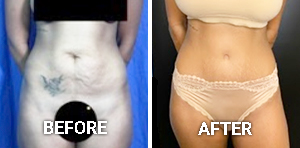Asian Ethnic Rhinoplasty
Conveniently located to serve the areas of Beverly Hills and Greater Los Angeles

Asian ethnic rhinoplasty is a surgery that is performed to address cosmetic and functional concerns and tailored to the unique nasal structure of patients of Asian descent. As with other forms of ethnic rhinoplasty, surgeons must pay special attention to preserve the inherent characteristics of the patient’s nose. When performing a rhinoplasty on an Asian patient, surgeons must also consider the cultural preferences and facial features that are specific to the diverse ethnic groups present in the many countries that make the Asian continent and islands. Dr. Michael Omidi is a board-certified plastic surgeon with extensive experience performing rhinoplasties on patients of all ethnicities. Asian, Middle Eastern, Latin American, and African American patients choose Dr. Omidi because they know that he can help them meet their goals while also achieving natural-looking results. To learn more about rhinoplasty, and how it can honor your Asian identity while meeting your needs, visit Dr. Omidi’s Beverly Hills offices. You can schedule a personal consultation by calling (310) 281-0155 or filling out an online contact form at your convenience.
About Asian Nasal Surgery
Patients of Asian descent have nasal characteristics that include flat bridges, bulbous tips, excessive flaring, and overly short and broad noses. In contrast to other noses where a bridge is reduced, rhinoplasty procedures in Asian patients are more challenging because the surgeon has to “build up” the nose. Implants such as Medpor, or Silicone are an option. Dr. Omidi prefers using autologous (from the patient) or rib cartilage rhinoplasty. Using a rib graft for rhinoplasty is beneficial in that the cartilage is from the patient and there is no rejection and a lower rate of infection. The tip often has poor support and shape and cartilage grafts are used to allow the tip to “stand” instead of “stoop” providing better shape and definition. The broad and flat nasal bones are also addressed in addition to the flaring of the ala. Correcting these issues results in a nose that is in harmony with the rest of the facial structures.
Foreign materials such as Gortex and silicone are often used outside of the United States to elevate the nasal bridge. Silicone and Goretex have a higher likelihood of eroding through bone, getting displaced, extruding through skin, getting infections, and permanently thinning the skin in addition to causing a significant amount of pain. Dr. Michael Omidi often removes these foreign materials and replaces them with harvested rib cartilage. The incision is about 2 inches and hides nicely in the inferior mammary crease. Conchal ear cartilage is an excellent graft for revision rhinoplasty where the tip cartilage is injured but not a good source of support in Asian Rhinoplasty procedures. Septal cartilage as well is a good source for providing tip support but is insufficient to create an elevated bridge. Therefore, rib cartilage is the most useful choice for rhinoplasty in patients with retrusion of the midface, Asian noses, and short noses.





